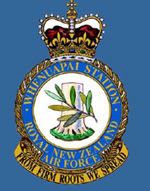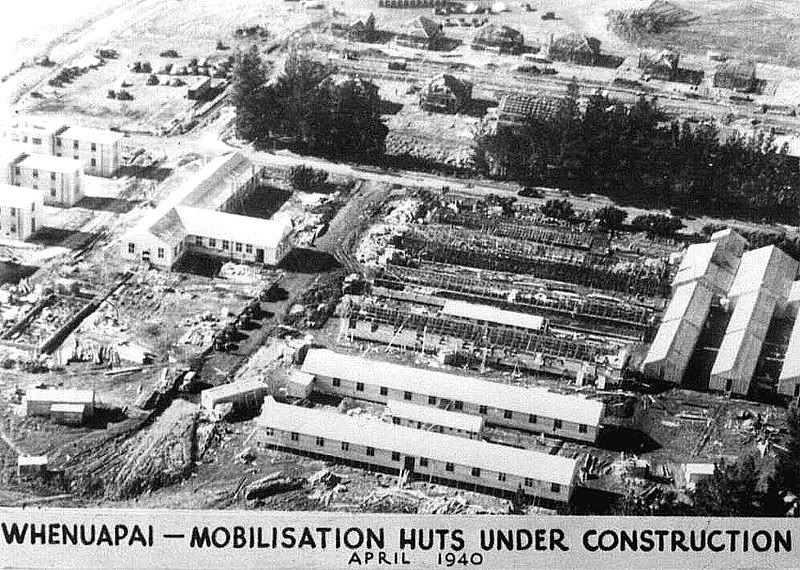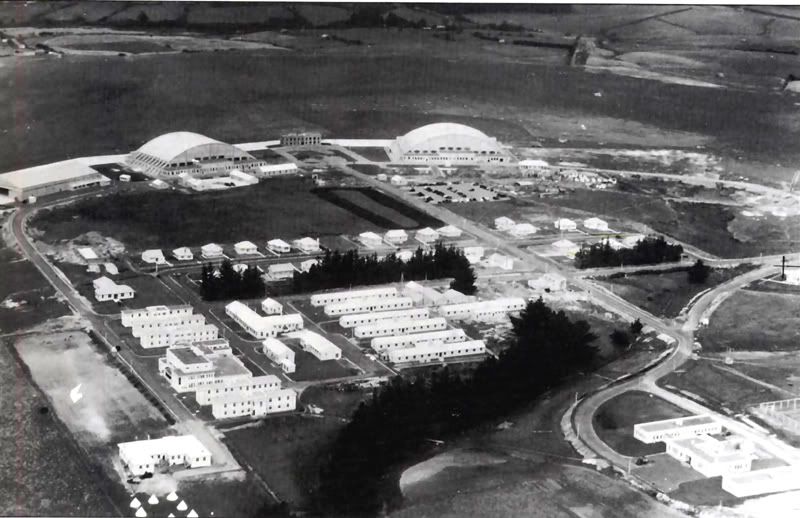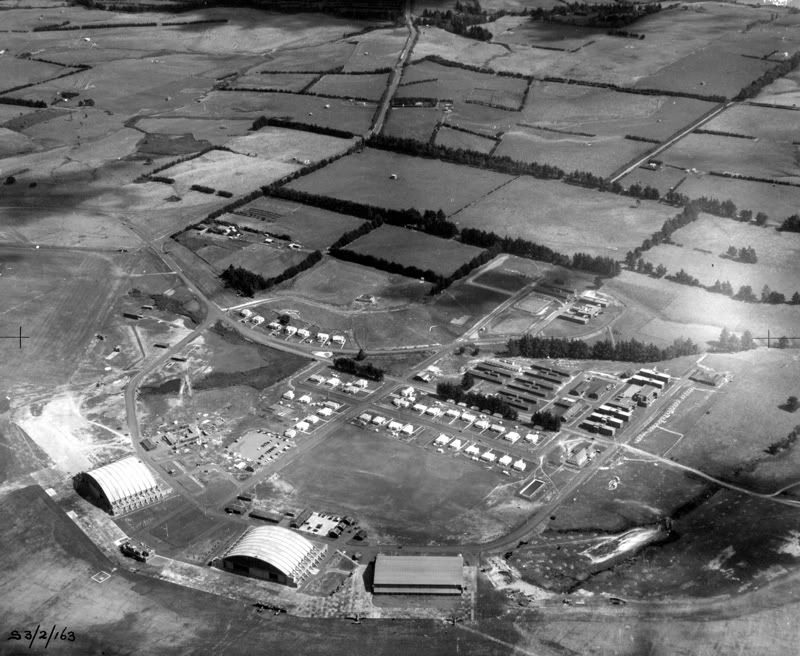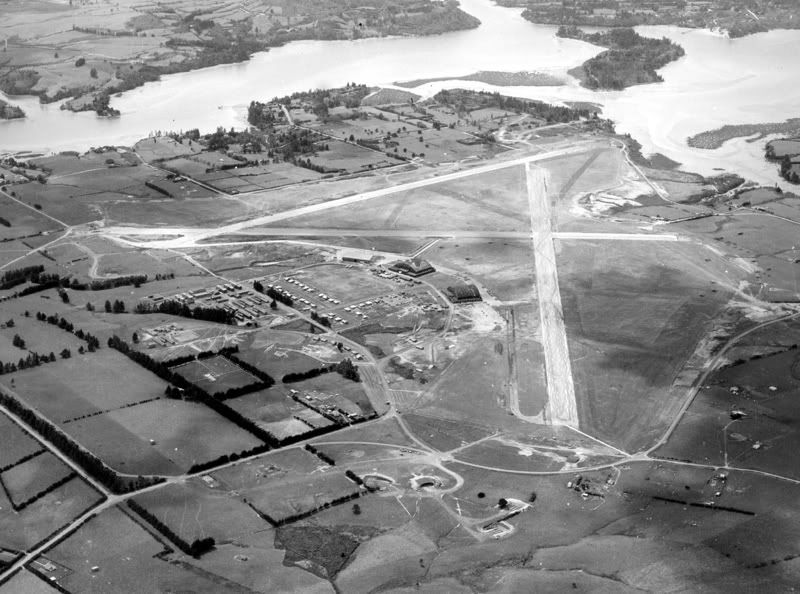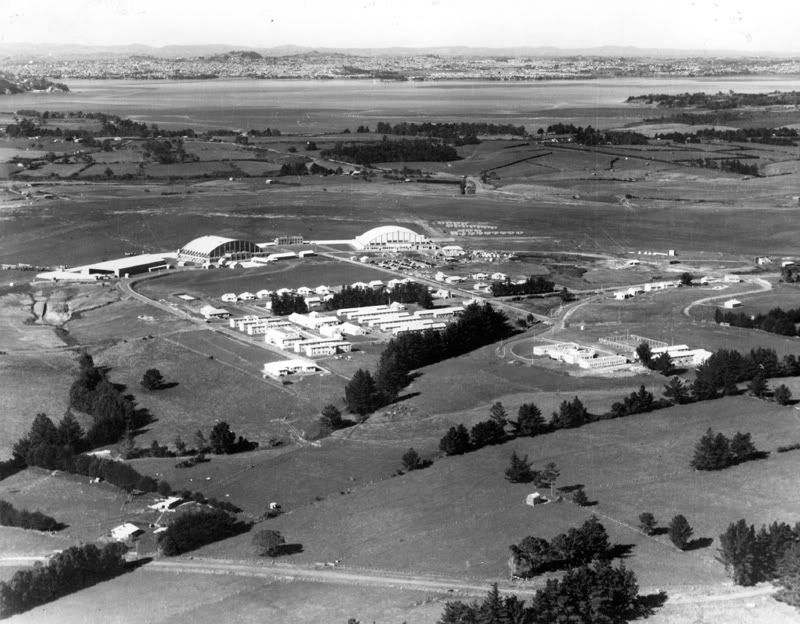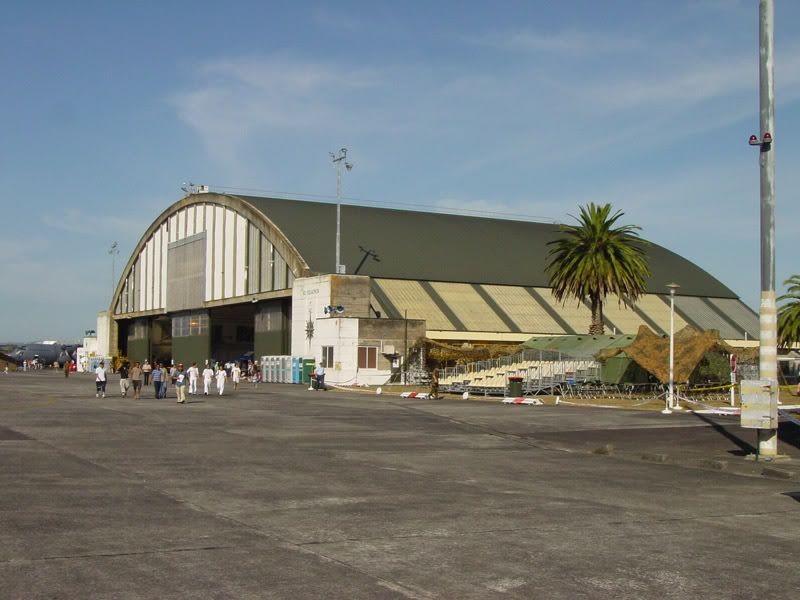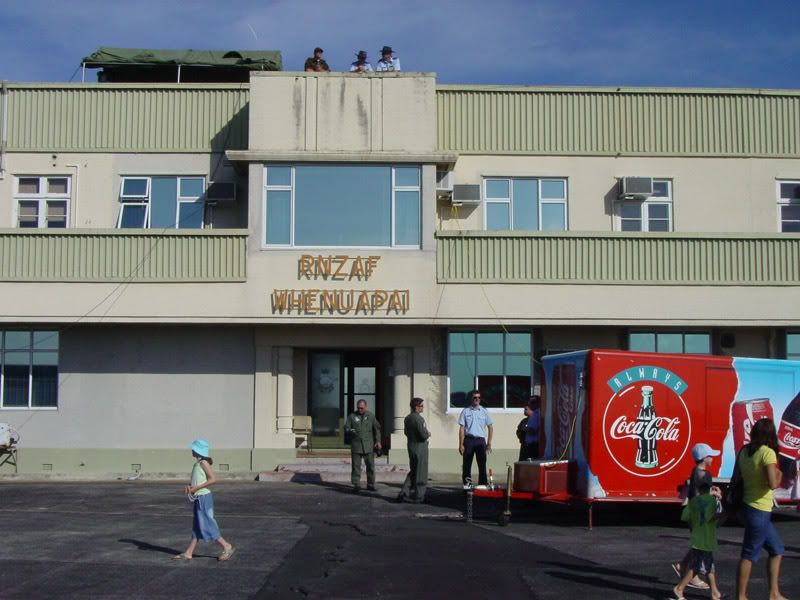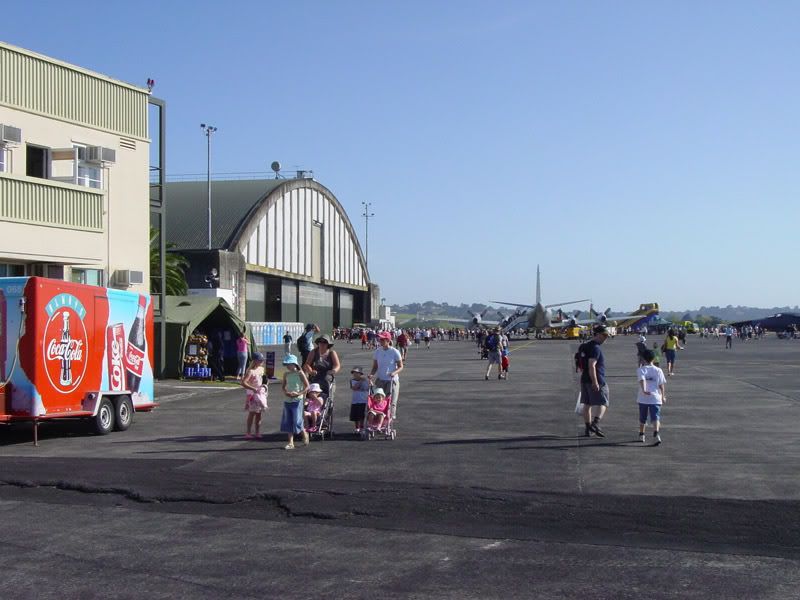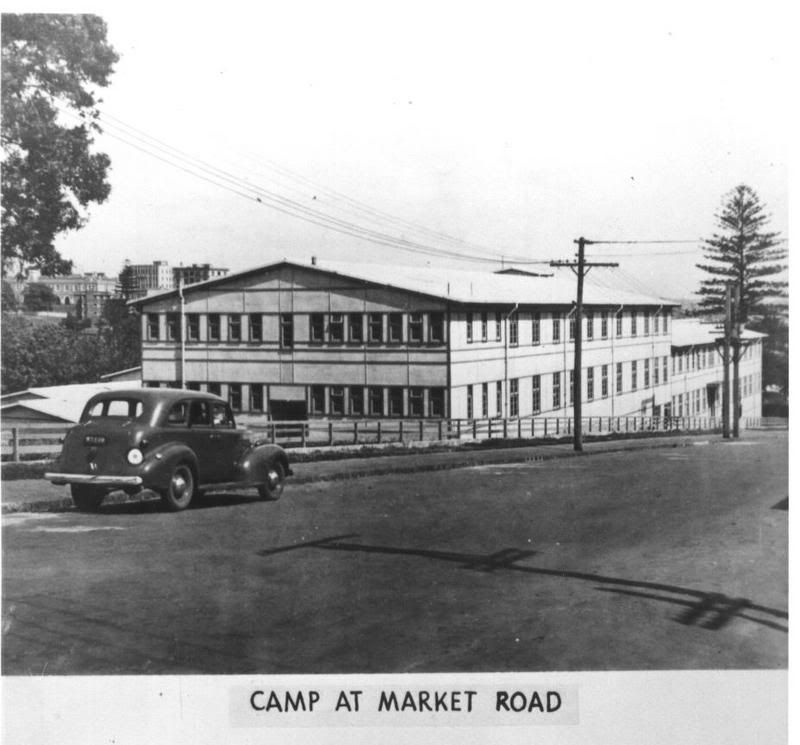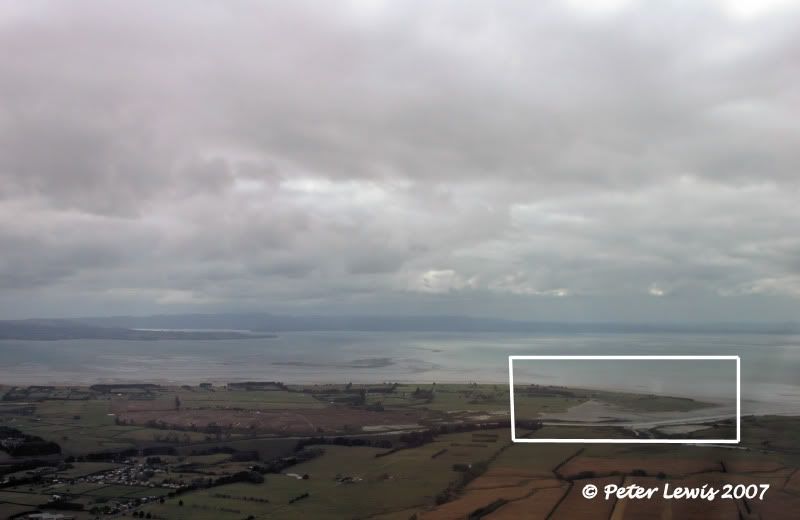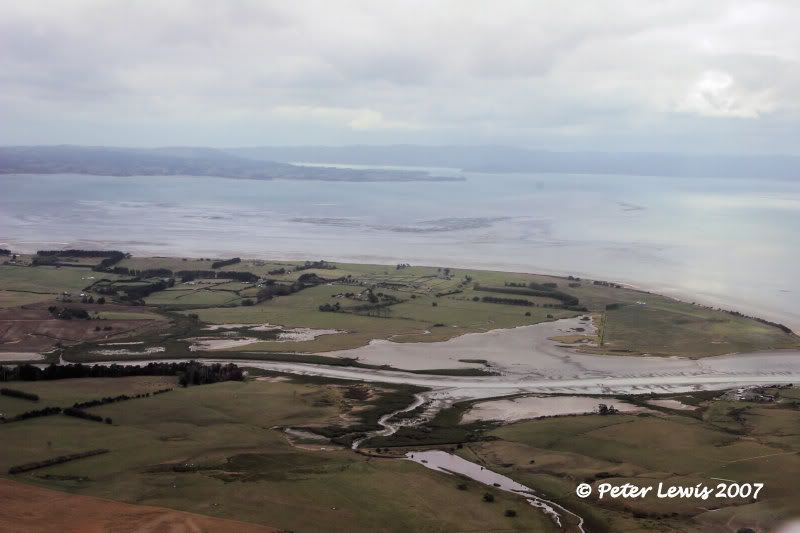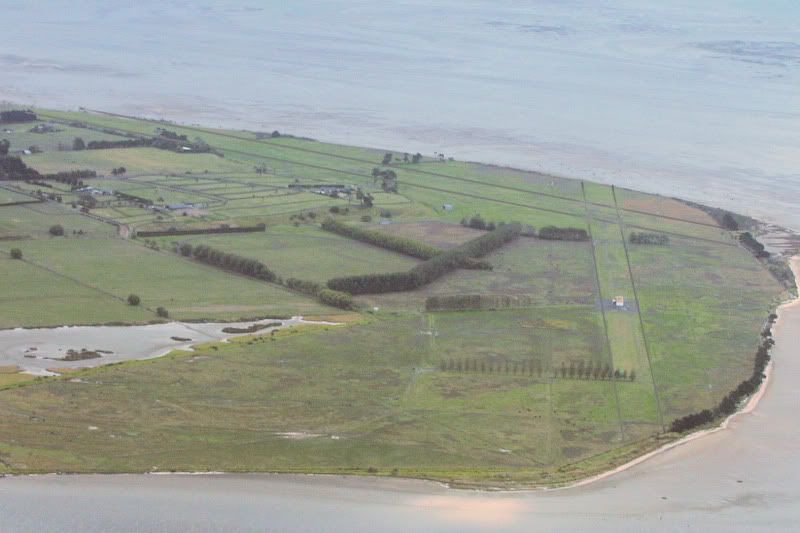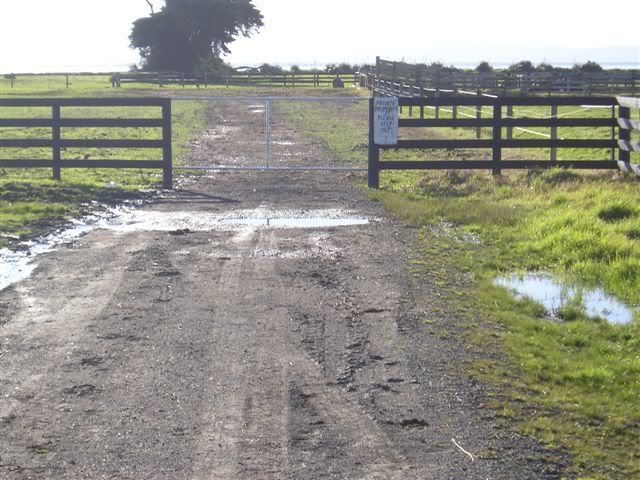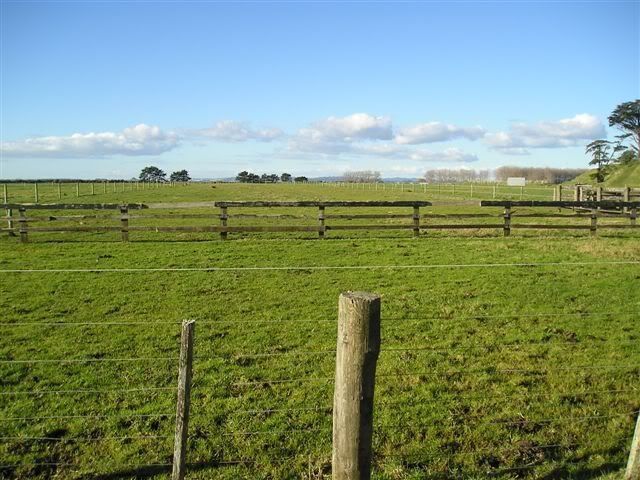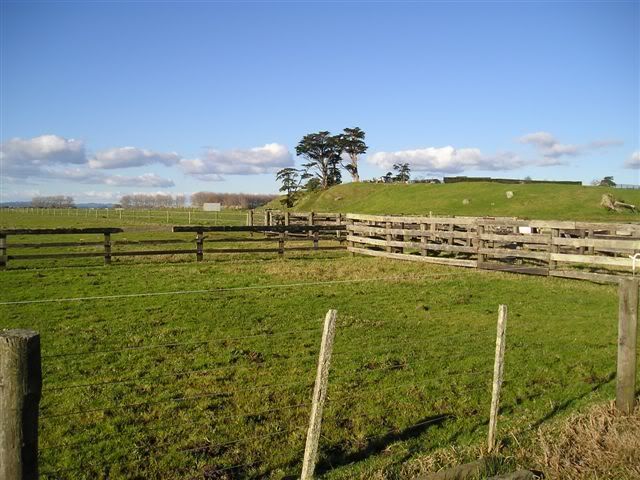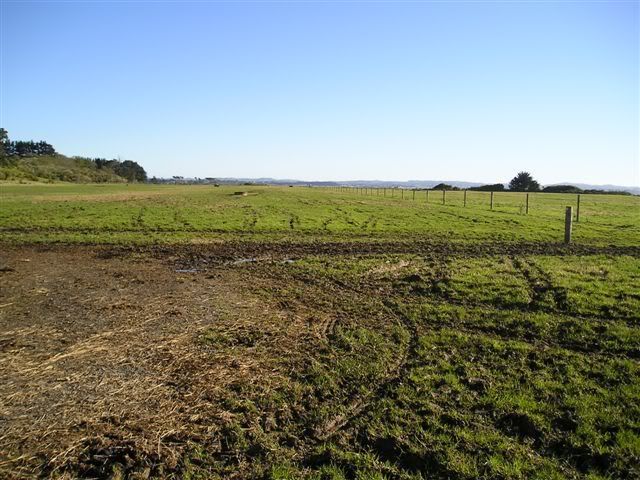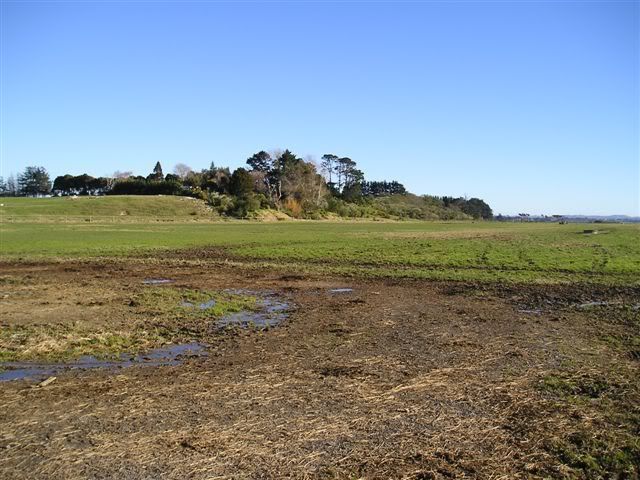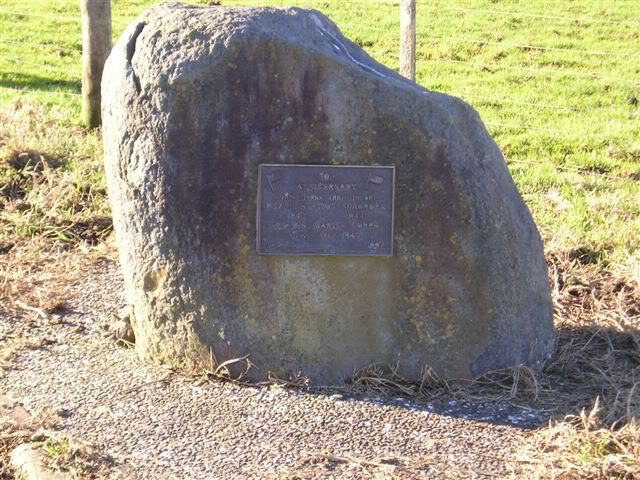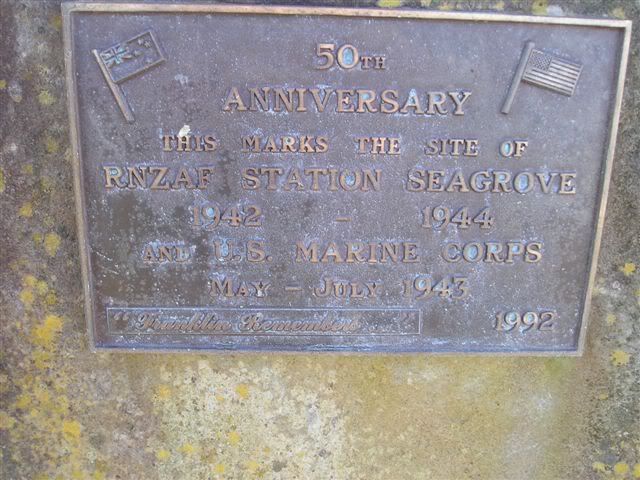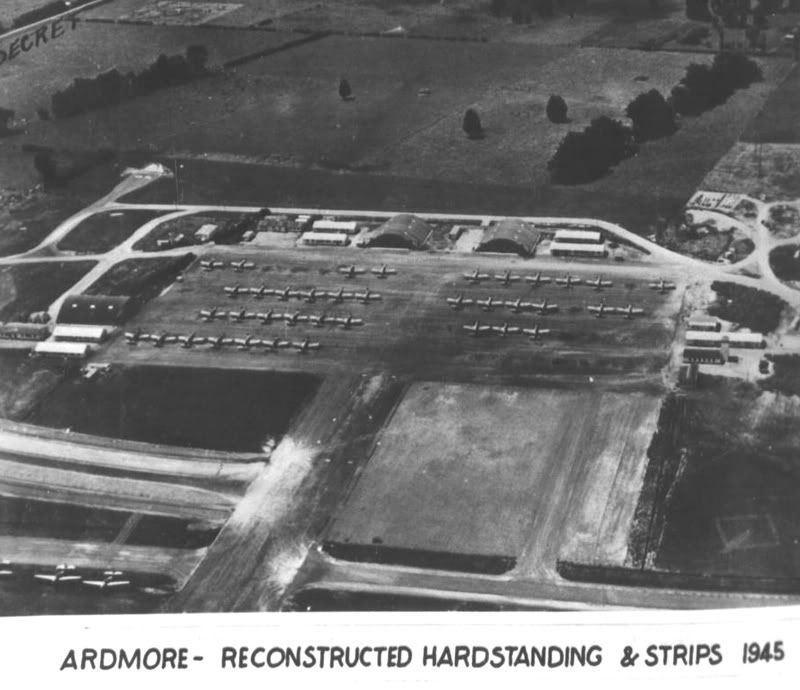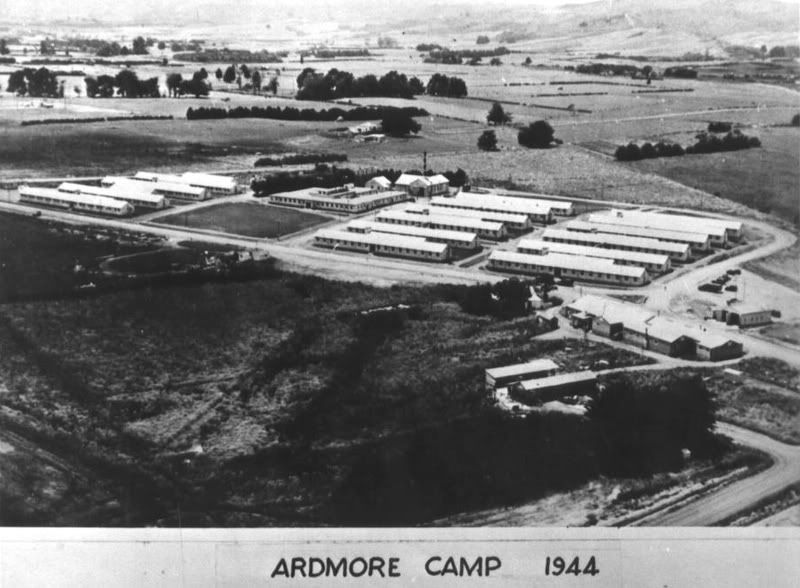

RNZAF Permanent Flying Training Station, Ground Training Station, Maintenance Depot and Stores Depot
Administered by: Royal New Zealand Air Force
Runways - Hobsonville had a large grass airfield, as well as an alighting area for flying boats and float-planes.
Meaning of Airfield Name - the area named after New Zealand's first Lieutenant-Governor, Captain William Hobson

Royal New Zealand Air Force

Auckland City

Hobsonville was only the second Air Force base ever established in New Zealand. The New Zealand Government purchased 167.5 acres of land in 1925 with plans to establish this base for the New Zealand Permanent Air Force. Situated just 6km from where RNZAF Station Whenuapai would later be built, Hobsonville sits right on the edge of the upper Auckland Harbour and the base is largely surrounded by water. The Government's plan in establishing the base at this location was, in the longer term, to begin flying boat operations. Therefore the first construction, which began in 1927, began with the establishment of a 'wet apron' where flying boats would roll up onto the land, and a jetty where cargo could be offloaded from small shipping.
However as well as the maritime element for flying boats and amphibians, the station had duality in that it had a large grass airfield for land-based aeroplanes to operate from, and it was military land planes that first used Hobsonville, a DH60 Moth and two Fairey IIIF's being purchased to be used for numerous purposes from this station.
Later the IIIF's were fitted with floats, and in 1930 the country's first military flying boat was bought and stationed there. This was a SARO A-17M Cutty Sark, which was a small twin-engined machine. The only pilot who could fly the Cutty Sark was Hobsonville's first Station Commander, Leonard Isitt (later to become the Chief of Air Staff).
As well as Isitt when the base first opened in 1928, there was a small group of airmen posted to the large station, and the whole population was just 30 airmen on strength.
During the 1930's the main role of the aircraft based at Hobsonville was to provide naval co-operation for the New Zealand Division of the Royal Navy with such duties as torpedo observation, drogue towing and spotting for gunnery practice. The aircraft also participated in refresher training for pilots of the Territorial Air Force.
Meanwhile from all the way back as far as 1928, civilian aviation was also happening at Hobsonville. This included Douglas Mills' aerial photography company and his de Havilland assembly plant. The larger hangar down by the wet apron was originally built for the TEAL Short Empire flying boats too, but TEAL ended up being based at Mechanics Bay due to the war needs of the hangarage. Sir Francis Chichester also did his preparation at Hobsonville before his epic proving flight from east to west across the Tasman Sea.
Most aircraft imported to New Zealand came by ship to the Port of Auckland, and they were usually disassembled and packed in crates. So they would be barged up to Hobsonville from the port, taken on shore at the Hobsonville jetty, and assembled and test flown on the station. This arrangement was to prove extremely valuable throughout World War Two with most of the RNZAF's aircraft arriving in New Zealand this way.
In 1936 a further 55 acres were purchased to extend the size of the airfield. During the late 1930's the base had begun to expand dramatically with lots of new barrack, married quarter homes, workshops and hangars being erected. The personnel size grew and grew too from 1937 as the RNZAF began a big recruiting drive.
Hobsonville also established some training and storage units. In fact the station had the RNZAF's only Stores Depot till 1942 when the unit moved to Hamilton and other depots were opened at Te Awamutu, Mangaroa and Weedons.
Many mechanics learned their trade in the concrete hangars on the wet apron before WWII and early on in the war before Technical Training Schools were established properly for ground staff.
In 1938 the Auckland Territorial Squadron was formed, and though their headquarters was in town they also used Hobsonville for training, particularly from 1939 when they received Blackburn Baffins to fly. Also based at Hobsonville from 1935 till 1939 were six Vickers Vildebeests, used by the regular RNZAF as a bomber reconnaissance flight and for training purposes.
In 1939 many aircraft began to arrive at Hobsonville for assembly as the RNZAF began to expand, due to the threat of a looming war. These included Fairey Gordons, Airspeed Oxfords and Vickers Vincents. Most of these went to Wigram once assembled but some stayed at Hobsonville.
When war broke out the Auckland Territorial Squadron was automatically seconded for regular service and they set up camp at Hobsonville. Lots of wartime activities began and in order to try to disguise the base from marauding enemy reconnaissance aircraft, certain camouflages were applied. This apparently included the bomb dump huts being redecorated to look like seaside homes, right down to washing lines and flapping washing being strung up outside! And a road and hedges were painted onto the airfield grass so it looked just like farm fields. Ingenious.
In 1940 the Flying Instructors School moved to Hobsonville from RNZAF Station Mangere, and the skies were suddenly full of Tiger Moths training new instructors as well as aircraft on test flights and operational General Reconnaissance bombers. However when Whenuapai opened up and the Baffins of the former Territorial squadron moved there, and other traffic began entering the Whenuapai airspace with the establishment of No. 4 EFTS there, the FIS moved to Tauranga for some clear air. Once there it was developed into the Central Flying School of the RNZAF.
More and more types arrived at the Hobsonville jetty for assembly and testing on the station, from P-40 Kittyhawks to Lockheed Hudsons to Chance Vought Corsairs.
The Seaplane Training Flight, which was a flying boat school where crews would be trained on the little Walrus aircraft before going up to Fiji onto the Catalinas, or even onto the transport Sunderlands, was also established in 1943. They used yachts as well as Walrus to train the crews in seamanship. The Walrus was already a familiar type to the wet apron at Hobby, as those on the New Zealand ships of the Royal Navy would often visit for maintenance there in the late 1930's.
In 1944 the old main gate to Hobsonville was closed and a new gate was opened. The old gate was on the southern side where many Married Quarters were built during and after the war. The new gate is off Hobsonville Road and remained the gate to the base till it closed and is still used today by the new tenants. If you know where to look you can still see the concrete sentry box at the old gate.
In 1944 and 1945 another new unit operated from the station, this being the Transport Training and Conversion Flight, flying Douglas C-47 Dakotas and Airspeed Oxfords.
When the war ended many of the wartime units disappeared. Hobsonville became something of a storage unit for aircraft withdrawn from use and for some years derelict Catalinas, Sunderland and smaller types including a Zero and a Seafire littered its airfield.
But some new units moved in too. The Technical Training School that was formerly at Nelson moved to Hobsonville. This later became No 1 TTS as various other stations opened schools again.
Maritime connections continued with Hobsonville and though immediate postwar flying boat operations for the RNZAF were at Lauthala Bay in Fiji, in June 1952 No. 6 FB (TAF) Squadron was formed as a semi Territorial-semi regular unit with two Catalinas and an Auster. Later they went onto Sunderlands. The flying boat maintenance for both No's 5 and 6 Squadrons was done at Hobsonville from 1953, which is when Sunderlands replaced the Catalinas. In 1955 the Maritime Operational Conversion Unit was established there.
In early 1965 three Auster were posted to the base to form the Light Reconnaissance Flight. These three aircraft were joined by some Harvards and Bristol Freighters and reformed as No. 3 Battlefield Support Squadron.
In late 1965 the squadron gained six new Bell Sioux helicopters on its inventory and a new era began for both Hobsonville and the RNZAF. By 1966 two more helicopter types were serving with No. 3 Squadron, the Bell Iroquois and Westland Wasp, the latter being naval aircraft attached to the new Leander class frigates. No. 3 Squadron maintained the Wasps in their Naval Support Flight, and they remained on the RNZAF's inventory despite being flown by Royal Navy and later Royal New Zealand Navy pilots.
The Siouxs later went into the training role and moved to the Central Flying School at Wigram (later Ohakea). And the Wasps were eventually replaced with Kaman Seasprites. These moved to Whenuapai in the late 1990's and in 2005 reformed as No. 6 Squadron. But the Iroquois continued at Hobsonville for decades.
As well as RNZAF units, Army, Navy and SAS units have served at Hobsonville in the postwar years. The Army had No. 5 Movements Squadron there, which looked after all the logistics of transporting army equipment around the country by air and land, etc. No. 1TTS was closed in 1993 and the SAS moved into their hangar from Papakura. They spent millions of dollars making the building and area secure, then moved back to Papakura (a base that was meant to close while Hobsonville was slated to stay open and expand as a tri-service base.)
Sadly the Government decided to close Hobsonville and the final parade of No. 3 Squadron, the last major unit there, was held in 2002 before they moved south to RNZAF Station Ohakea. The current Government have decided that rather than preserve the land as an airfield or even a much-needed park in the growing sprawl that now surrounds the once-remote base, this incredibly historic station will soon become just another housing suburb covered in awful state housing to home Auckland's ever increasing population.

1928, as a New Zealand Permanent Air Force station

Prewar Station Commanders
Squadron Leader Leonard Isitt (1928 - ?)
Wartime Station Commanders
Squadron Leader Edward George 'Ted' Olson DSO (February 1938 - July 1939)
Squadron Leader Hugh Bartholomew Burrell OBE (July 1939 - September 1939)
Squadron Leader W. Gordon Coull (September 1939 - July 1941)
Wing Commander Frances Esme Theodore Hewlett DSO, OBE (July 1941 - December 1941)
Wing Commander John Seabrook AFC, ED, LofM (US) (December 1941 - July 1942)
Wing Commander W. Gordon Coull (July 1942 - November 1942)
Wing Commander GR White (November 1942 - May 1943)
Wing Commander FR Newell (May 1943 - January 1944)
Wing Commander Ronald Joseph "Nugget" Cohen (January 1944 - March 1944)
Wing Commander JE Rawnsley (March 1944 - ? 1945)
Squadron Leader Willis (during 1945)

Today the base continues to serve as a tri-service military establishment, though hugely scaled back. Part of the base was sold off to a foreign investor who intended to build yachts in the old TEAL hangars but I believe this company never went anywhere and he's now sitting on prime waterfront real estate. A huge super hangar was built for something, maybe by the boat builder, but it was recently used as a film studio where the Narnia film was made.
Some RNZAF buildings have already gone - some moved, some demolished. The rest of the base will soon be no more once Housing Corporation builds its dog-boxes over NZ's last remaining prewar Air Force station. It's a huge shame and an outrage, Hobsonville was a stunning little base to work on, with a close knit and efficient team of RNZAF, Army and Navy personnel.
















